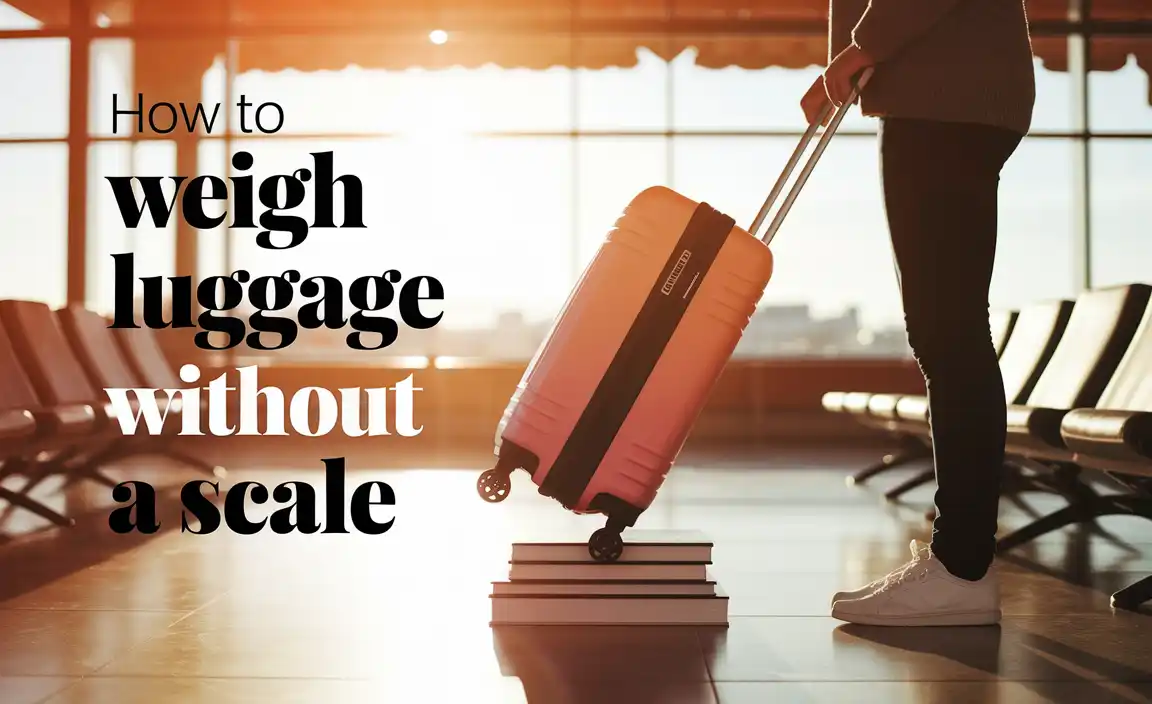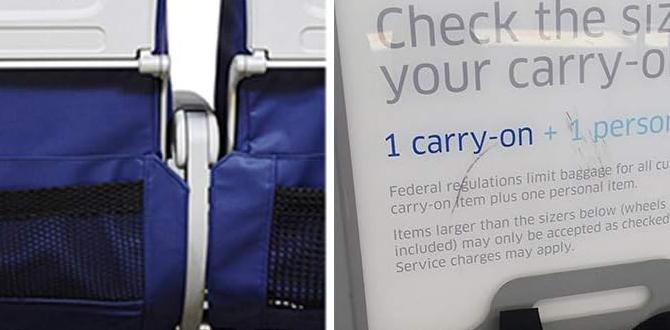Blue Mountains Accessible Travel Guide: Genius Tips
Planning an accessible trip to the Blue Mountains is easier than you think! This guide provides smart, practical tips for a comfortable and enjoyable experience, focusing on seamless navigation, inclusive activities, and essential packing. Discover how to make your visit stress-free, regardless of mobility needs.
The Blue Mountains are an absolute gem, offering stunning landscapes and breathtaking views. Planning a trip there can sometimes feel a little overwhelming, especially if you’re looking for accessible options. You might worry about how to get around, where to stay, or if there are enough activities you can enjoy. Don’t let these concerns hold you back! With a little preparation and the right information, your Blue Mountains adventure can be incredibly rewarding and completely stress-free, no matter your needs. We’re here to share our top tips to ensure your journey is smooth, comfortable, and full of wonderful memories. Get ready to explore the magic of the Blue Mountains with ease!
Planning Your Accessible Blue Mountains Adventure
Embarking on a journey to the Blue Mountains should be a joyous experience for everyone. The key to an accessible trip lies in thorough planning. This involves understanding your needs and researching what the region offers to meet them. From transportation to accommodation and activities, every detail matters. We’ll break down the essential steps to ensure your visit is not just possible, but truly enjoyable and memorable.
Transportation Options for Seamless Travel
Getting to and around the Blue Mountains with accessibility needs requires a bit of forethought. Fortunately, there are several options to consider, aiming to make your journey as smooth as possible.
Getting to the Blue Mountains
- Train: NSW TrainLink operates services from Sydney to various Blue Mountains towns like Wentworth Falls, Leura, Katoomba, and Blackheath. Many stations have accessible platforms and facilities. It’s a scenic and relaxing way to start your trip, offering a chance to enjoy the changing landscape without the stress of driving. Check the Transport NSW website for detailed station accessibility information and timetables.
- Accessible Taxis and Ride-Share: For door-to-door service, consider booking an accessible taxi or ride-share vehicle in advance. Services like 13CABS or Silver Top Taxis often have a specific fleet of wheelchair-accessible vehicles available upon request.
- Private Vehicle: If you’re driving your own vehicle, ensure it’s comfortable and easy to manage. Research parking options at your accommodation and for your planned attractions beforehand. Some larger car parks may offer designated accessible parking bays.
Getting Around in the Blue Mountains
Once you’re in the Blue Mountains, navigating between towns and attractions is crucial for an enjoyable experience.
- Local Buses: The local bus network, operated by CDC NSW (Country Division), connects the various villages. While not all buses are fully wheelchair accessible, many are fitted with ramps or lifts. It’s best to check the specific route and vehicle type with CDC NSW beforehand or look for the accessibility symbols on their timetables.
- Accessible Tours: Several tour operators in the Blue Mountains offer specifically designed accessible tours. These often use vehicles equipped with hoists or ramps and may focus on routes with easier access. Researching these specialized tours can open up a world of possibilities for experiencing iconic sights comfortably.
- Walking and Mobility: While many of the dramatic lookouts and trails can be challenging, many villages have accessible footpaths. For shorter distances within towns like Katoomba or Leura, a mobility scooter or wheelchair can be very useful. Consider renting one if needed.
Accommodation That Welcomes Everyone
Finding the right place to stay is fundamental to a relaxing holiday. Thankfully, many Blue Mountains accommodations are focusing on inclusivity.
- Accessible Hotel Rooms: Many hotels and motels offer rooms with wider doorways, grab bars in bathrooms, roll-in showers, and accessible height amenities. Always confirm these details directly with the accommodation provider when booking.
- Self-Contained Apartments and Cottages: These can offer more flexibility and space. Some are specifically adapted for accessibility. Look for properties that highlight features like level entry, accessible bathrooms, and open-plan living areas.
- Bed & Breakfasts (B&Bs): While many B&Bs may be in older buildings potentially posing challenges, some have undergone renovations to improve accessibility. It’s essential to have a detailed conversation with the hosts about your specific needs.
- Booking Platforms: When using online booking sites, look for the “accessibility features” filter. This can help narrow down your search to places that explicitly state they cater to guests with disabilities.
Accessible Attractions and Activities
The Blue Mountains are famous for their natural beauty. The good news is that many of the most iconic sights have made significant efforts to improve accessibility.
Iconic Lookouts and Viewpoints
- Echo Point Lookout (Katoomba): Home to the famous Three Sisters, Echo Point has undergone significant upgrades. It now features accessible viewing platforms, smooth pathways, and accessible parking, offering spectacular views without the need for strenuous walking.
- Govetts Leap Lookout (Blackheath): This lookout provides breathtaking 180-degree views of the Grose Valley. The main viewing platform is largely accessible, with paved paths leading to it. Some of the more adventurous walking tracks from here are not suitable, but the panorama from the top is simply stunning.
- Lincoln’s Rock (Wentworth Falls): This unique rock outcrop offers incredible panoramic views. The main viewing area is easily accessible from the car park, making it a great spot to soak in the vistas.
Gentle Walks and Nature Experiences
While many famous hiking trails are rugged, there are accessible options for enjoying the natural environment.
- Prince Henry Cliff Walk (Partial): Sections of this popular walk between Echo Point and the Three Sisters have been paved and widened, making them more accessible for wheelchairs and mobility aids. You can enjoy significant portions of the stunning scenery.
- Blue Mountains Botanic Garden, Mount Tomah: This beautiful garden offers a variety of accessible paths winding through diverse plant collections. It’s a wonderful place to explore at your own pace, with accessible facilities available.
- Waratah Produce Trail (Katoomba Falls): While not entirely flat, the pathway leading to some viewpoints of Katoomba Falls is relatively wide and made of compacted gravel, offering a manageable experience for those with mobility aids.
Cultural and Arts Experiences
Beyond the natural landscapes, the Blue Mountains offer rich cultural experiences.
- The Hydro Majestic Hotel: Steeped in history, this iconic hotel offers accessible areas for dining and enjoying the incredible views.
- Various Galleries and Shops in Leura and Katoomba: Many shops and art galleries in the main village streets have level access or small ramps. It’s always worth checking directly if you have specific needs.
- Blue Mountains Cultural Centre (Katoomba): This modern facility is designed with accessibility in mind, featuring ramps, lifts, and accessible restrooms, providing a great indoor option to explore local art and history.
Key Considerations for Comfort and Practicality
Traveling comfortably and without worry is paramount. Here are some practical tips to enhance your Blue Mountains experience, especially when managing personal care needs.
Packing Essentials for an Accessible Trip
Beyond the usual travel items, consider these for added comfort and peace of mind:
- Comfortable Footwear: Even with accessible transport, you’ll likely do some walking or moving around. Prioritize supportive, comfortable shoes.
- Weather-Appropriate Gear: The Blue Mountains weather can change rapidly. Pack layers, including waterproofs, even in summer.
- Personal Care Items: Ensure you pack an adequate supply of any personal care items you rely on. For adults and children who might need them, discreet and reliable options are key for stress-free travel. Brands specializing in comfortable, absorbent adult and child diapers for active lifestyles can provide confidence. Look for products designed for long-lasting protection and comfort, ensuring you can focus on enjoying your activities rather than worrying about leaks or discomfort.
- Mobility Aid Accessories: If you use a wheelchair or scooter, pack repair kits, spare batteries (if applicable), and comfortable cushions.
- Portable Charger: Keeping your phone or other devices charged can be crucial for navigation, communication, and accessing essential information.
- Medications and First-Aid: Carry any necessary medications and a small, well-stocked first-aid kit.
Planning for Rest Stops and Refreshments
Pacing yourself is important for any trip, and especially so when accessibility is a factor.
- Identify Accessible Cafes and Restaurants: Many popular cafes and restaurants in towns like Katoomba and Leura have accessible entrances and restrooms. Check online reviews or call ahead to confirm.
- Carry Snacks and Water: Having your own supply of snacks and water can be a lifesaver, especially if you’re exploring more remote, yet accessible, scenic spots.
- Schedule Downtime: Don’t overschedule! Factor in ample time for rest and relaxation at your accommodation or a quiet, accessible spot with a view.
Utilizing Local Resources
The Blue Mountains community is generally welcoming and helpful.
- Visitor Information Centres: These are fantastic resources for up-to-date information on accessible routes, facilities, and local services. The staff can offer invaluable advice tailored to your needs.
- Online Accessibility Guides: Many local tourism websites and disability advocacy groups provide detailed accessibility guides for the Blue Mountains.
- Disability Support Services: In case of an emergency or for specific needs, knowing about local support services can provide peace of mind.
Sample Itinerary Ideas for Accessible Blue Mountains Stays
Here are a couple of sample itinerary ideas to get you started. These can be adapted based on your interests and pace.
A Relaxed Two-Day Escape
Day 1: Katoomba Charm
- Morning: Arrive in Katoomba, check into your accessible accommodation.
- Late Morning: Visit Echo Point Lookout for stunning views of the Three Sisters. Enjoy the accessible paths and viewing platforms.
- Lunch: Have lunch at an accessible cafe in Katoomba Main Street.
- Afternoon: Explore the Blue Mountains Cultural Centre for art and local history.
- Evening: Enjoy a relaxed dinner at an accessible restaurant.
Day 2: Scenic Views and Gardens
- Morning: Travel to Mount Tomah to explore the Blue Mountains Botanic Garden. Enjoy leisurely strolls on accessible paths.
- Lunch: Pack a picnic to enjoy in a scenic spot within the gardens, or dine at their accessible cafe.
- Afternoon: Visit the Hydro Majestic Hotel for a glimpse of history and magnificent valley views, ensuring you confirm accessibility for viewing areas.
- Late Afternoon: Begin your journey home or to your next destination.
An Active Three-Day Discovery
Day 1: Arrival and Katoomba Icons
- Morning: Arrive and settle into your accommodation in Katoomba or Leura.
- Lunch: Enjoy a meal at an accessible eatery.
- Afternoon: Head to Echo Point for the Three Sisters. Consider a gentle, accessible portion of the Prince Henry Cliff Walk for more views.
- Evening: Dinner at a highly-rated accessible restaurant.
Day 2: Blackheath Horizons
- Morning: Drive or take accessible transport to Blackheath.
- Late Morning: Visit Govetts Leap Lookout for expansive views of the Grose Valley. The main platform is easily accessible.
- Lunch: Find an accessible cafe in Blackheath village.
- Afternoon: Explore the charming shops and galleries in Blackheath, many offering level access.
- Late Afternoon: Visit Campbell’s Stores for a unique shopping experience in a partially accessible historic building.
Day 3: Wentworth Falls and Departure
- Morning: Travel to Wentworth Falls. Visit Lincoln’s Rock for incredible views and to experience the unique geology up close via accessible paths.
- Late Morning: Explore the accessible viewing areas around Wentworth Falls, enjoying the different perspectives of the waterfall from above.
- Lunch: Enjoy a final accessible meal with a view in Wentworth Falls or on your route home.
- Afternoon: Depart from the Blue Mountains.
Travel Checklist for Blue Mountains Accessibility
To ensure nothing is missed, here’s a handy checklist:
- Accommodation: Booked & confirmed accessibility features.
- Transportation: Arranged accessible transfers to/from the Blue Mountains. Booked accessible local transport or tour if needed.
- Attractions: Researched accessibility of planned viewpoints, gardens, and cultural sites.
- Mobility Aids: Checked condition, packed necessary accessories/repair kits.
- Personal Care: Packed sufficient supplies of any required items for adult or child needs.
- Weather Gear: Checked forecast, packed layers, waterproofs.
- Medications & First-Aid: Packed all necessary prescriptions and a basic kit.
- Documents: Travel insurance, booking confirmations, essential contact numbers.
- Snacks & Water: Prepared portable provisions.
- Communication: Ensured phone is charged, consider a portable charger.
Table of Accessible Blue Mountains Lookouts
Here’s a quick reference for some of the most accessible and rewarding lookouts:
| Lookout Name | Location | Key Accessible Features | What You’ll See |
|---|---|---|---|
| Echo Point Lookout | Katoomba | Paved paths, accessible viewing platforms, accessible parking, public restrooms nearby. | The iconic Three Sisters, Jamison Valley. |
| Govetts Leap Lookout | Blackheath | Main viewing platform is paved and level with parking. | Grose Valley, Bridal Veil Falls, vast escarpments. |
| Lincoln’s Rock | Wentworth Falls | Accessible from car park to main rock outcrop viewing area. | Expansive panoramic views of Jamison Valley and Jamison Range. |
| Eagle Hawk Lookout | Blackheath | Accessible viewing shelter and paved path from car park. | Views into the Grose Valley, alternative to Govetts Leap. |
Additional Helpful Resources
For further planning and detailed information, consider these authoritative sources:
- Blue Mountains Tourism Official Website: Often has sections dedicated to accessibility or can direct you. (e.g., visitbluemountains.com.au)
- National Parks and Wildlife Service (NPWS): For information on accessible trails and facilities within national parks. Ensure you check the specific park pages for current conditions and accessibility. (e.g., nationalparks.nsw.gov.au)
- Disability Gateways/Advocacy Groups: Websites like Active Living or Wheelies With Wheels often provide travel tips and resources relevant to accessible tourism across Australia.
Frequently Asked Questions About Accessible Blue Mountains Travel
Are public transport options in the Blue Mountains wheelchair accessible?
<p





